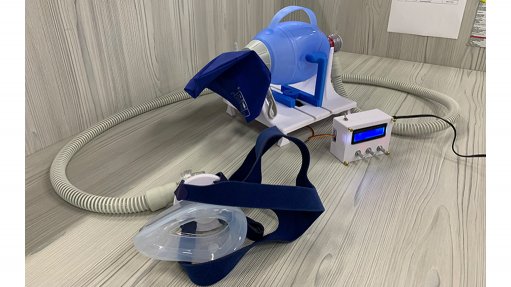
The shortage of ventilators during the Covid-19 pandemic has seen many manufacturing companies move from their traditional industries to the life sciences industry and, specifically, the manufacture of ventilators.
International business law firm Fasken says that, for traditional industries such as motor vehicle manufacturing, industrial and mining to start manufacturing or importing and exporting ventilators, they must obtain a medical device establishment licence from the South African Health Products Regulatory Authority (Sahpra).
This registration with the authority for the manufacture or import of a ventilator under normal circumstances takes between eight to ten weeks; however, this is currently being fast-traced to a turnaround time of seven days.
Fasken explains that, where the design of a ventilator is already internationally approved, it can usually be accepted by Sahpra, but in the case of a new design or product, a more extensive and expert evaluation is required and will result in longer turnaround times.
Fasken partner Martha Burnett says that as ventilators are deemed a higher-risk medical device, which is determined by the level of invasiveness and duration of use of a product, an applicant for registration must prove that the ventilator fulfils various criteria in terms of safety and performance.
The criteria is provided by Sahpra and considered during the application review process. There are further requirements for quality management and post-market vigilance, besides others, that must also be adhered to in order for a medical device to be registered and made available on the South African market.
In addition to the process for registration of ventilators available at Sahpra, the Department of Trade, Industry and Competition (DTIC) launched the National Ventilator Project (NVP) to ensure the demand for ventilators can be met.
The NVP called for proposals for a non-invasive (pre-intubation) ventilator to identify role players in the industry able to assist the DTIC to meet the anticipated demand in this regard.
INVASIVE VS NON-INVASIVE VENTILATORS
Burnett points out that it is important to understand the difference between a ventilator and a non-invasive (pre-intubation) ventilator for purposes of registering the medical device in the correct class of devices with Sahpra.
A ventilator is a medical device used to support breathing by means of an endotracheal (ET) tube being placed in the trachea under local anaesthesia with sedation or general anaesthesia.
This ET tube is connected to a mechanical ventilator using appropriate connection tubing.
The ventilator senses the breathing needs of an individual and gives appropriate pressures to inflate the lungs to either replace the breathing efforts of the individual or supplement spontaneous breathing in various disease conditions.
A non-invasive ventilator is usually a smaller medical device with less sophistication. It is connected using an external mask which is tight fitting over the nostrils and mouth of an individual.
A good air seal at the mask-face interface is required to ensure proper functioning of non-invasive ventilators.
The advantage, however, is that the individual can remain fully alert without any need for sedation or anaesthesia.
There is also no need to place an ET tube in the trachea, which substantially lowers the level of invasiveness and risk for complications such as damage to the vocal cords, bleeding, infection and aspiration, tearing or puncturing of tissue in the chest cavity which can lead to lung collapse and injury to the throat or trachea.
It is this lowered complication-risk which makes the non-invasive (pre-intubation) ventilator a good choice in effectively treating the respiratory symptoms of Covid-19.